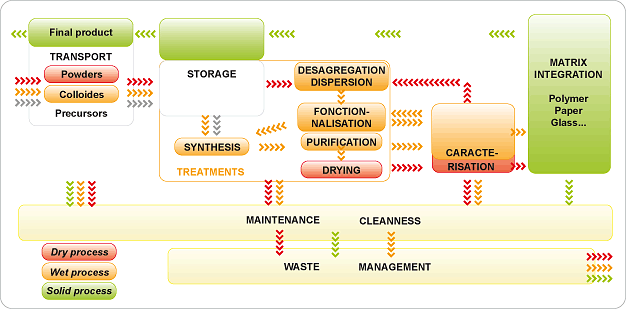
Nanowet functional process.
The precursors do not present any specific "nano" risks, but may require specific chemical monitoring (e.g. cadmium oxide).
Encapsulation consists, through colloidal synthesis, in growing a shell around the nanoparticles to improve their compatibility with the integration matrix, their thermal or chemical protection, or to provide an additional property, etc.
Functionalization of the nanoparticles consists in grafting chemical species on the surface with a view to encouraging colloidal dispersion, providing specific surface properties (e.g. hydrophilic/hydrophobic) and a specific chemical reactivity, or improving compatibility with the insertion matrix.


